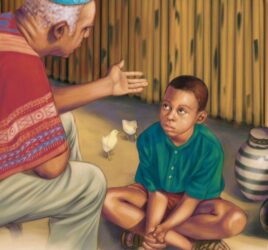In his book, To Live in Peace: Biblical Faith and the Changing Inner City,[1] author Mark Gornik challenges the reader to “consider the promise and possibility of God’s peace for the changing of the American inner city” (p. 1). Drawing from multiple disciplines, Gornik sets out to answer three basic questions: how we are to think about our dilapidated inner city neighborhoods; how the church is to act our Christ’s narrative story; and how we can interpret God’s new creation in this context.
Intertwined throughout the book, Gornik tells the story of Sandtown, a destitute neighborhood of Baltimore, Maryland. In the mid-1980s, the author and a team of church planters moved into Sandtown to be a blessing to their new neighbors. They first built relationships with their neighbors and allowed them to share their struggles and the dreams they had for Sandtown. Then, in collaboration with Habitat for Humanity, the team helped local residents rebuild entire street blocks one home at a time. Once paying high rents to absent landlords, the poor became home owners in their own neighborhood. Rather than looking for an escape, families stayed and worked together for a better future.
In time, not only did they establish Sandtown Habitat for Humanity, but also New Song Community Church, New Song Community Learning Center, New Song Family Health Center, and the Eden Jobs and Economic Development program. By 2002, over 100 full-time staff worked for the various projects, 70% being original Sandtown residents. (Visit www.nsum.org for more information.)
Gornik presents a holistic vision of how a small mustard seed can grow into a large Kingdom tree. Several Biblical themes, characters, and stories are frequently highlighted. Jeremiah 29:7 is a key verse, when God called His people to seek the peace and welfare of Babylon and pray for it. Similarly, Christ-followers are to seek the shalom of today’s inner cities and contribute to its welfare. Other Scripture references are the accounts of creation (Gen. 1-3) and the eternal city of God (Rev. 21-22), Isaiah’s vision of God’s city (chapter 65), Nehemiah’s story of urban renewal, the parable of the Good Samaritan (on being a good neighbor), the parable of the great banquet, the parable of Lazarus and the rich man, and Ephesians’ theme of justification and justice.
To Live in Peace has been an inspiration to me in preparing for our church’s upcoming sermon series and our effort to love the city of Hanoi. In September, we will launch a five-week series on The City of Peace. In November our focus will be on justice issues with an emphasis on urban renewal. Gornik’s story demonstrates that it is possible to bring peace to the most deprived neighborhoods of American cities, one person, one home, and one street at a time. It is our task and challenge to figure out how an expatriate church in Hanoi, Vietnam, can seek the peace and welfare of that historic city and pray for it.
By Jacob Bloemberg
[1] Gornik, Mark R. To Live in Peace: Biblical Faith and the Changing Inner City. Grand Rapids, MI: William B Eerdmans Publishing Company, 2002.




